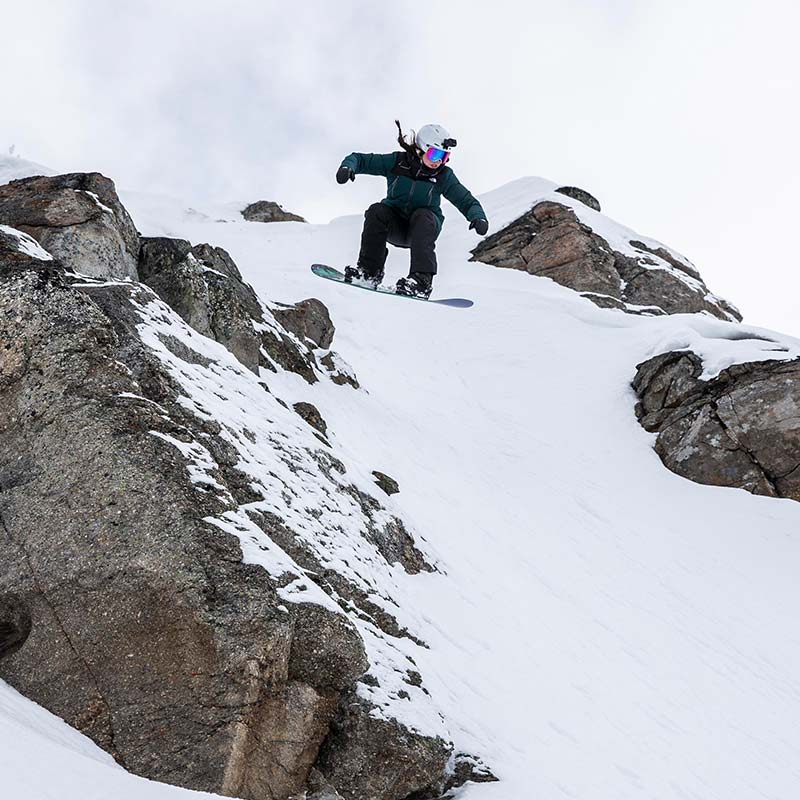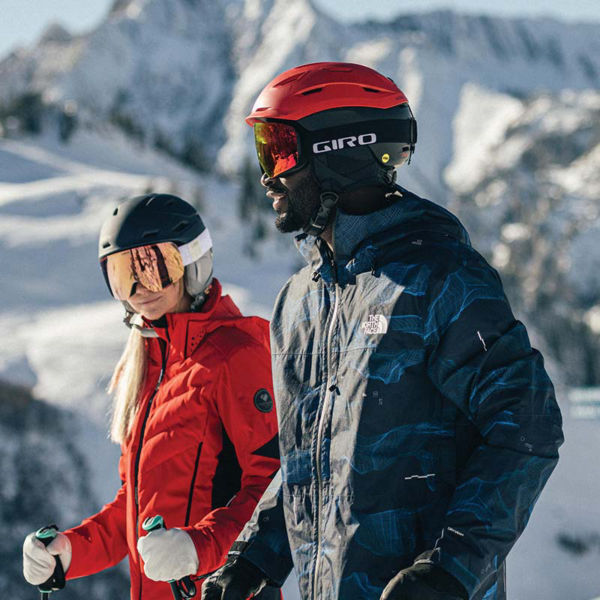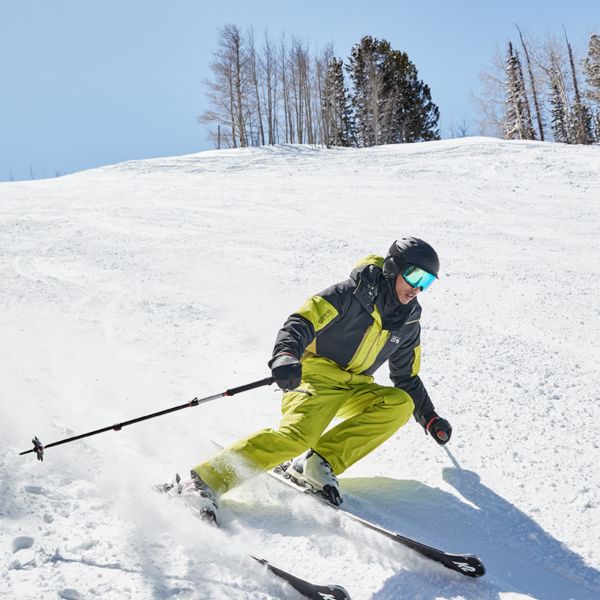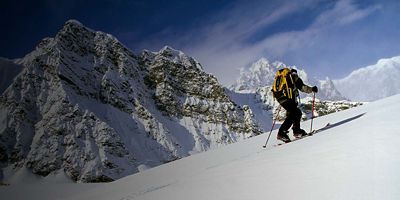
Every year, more skiers are discovering the best part of winter: alpine touring. Using specialized gear to explore the backcountry—hiking up and skiing down—opens a whole new world. What to expect? Terrain and scenery you won’t find in any resort. Unmatched solitude. Untouched powder. The afterglow of a great workout. Fun—lots and lots of fun. No debate: Alpine touring is one of the best ways to expand the number of days you spend in the mountains, but it comes with a learning curve, so start with this guide to the fundamentals.
Gear
The big difference in alpine touring (AT) gear over alpine (resort) gear is weight. When a chairlift is doing all the work, you can afford to have heavier gear. But when you’re walking uphill, you want a kit that balances low weight with performance.
Skis
Technically, you can mount an AT binding to just about any ski. And depending on your skiing goals and budget, some skis can do double duty as both resort and AT skis. But most backcountry skiers end up wanting skis that are made for the job, often designed with lighter wood core materials or carbon. Beyond weight, pick skis that suit the conditions you expect and type of skier you are. Prefer mellow glades over steep chutes? Seeking powder above all? Will ski in any snow? Get the lightest skis that match.
Bindings
Alpine touring bindings are a key innovation in the evolution of backcountry skiing. Unlike telemark bindings, which only secure your toe, AT bindings let you lock your boot in place, so you can ski downhill just like you do at a resort. But when it’s time to travel uphill you can unlock your heel, allowing you to pivot at your toes and walk more normally. There are many different options; some prioritize low weight while others are more like slimmed down versions of resort bindings.
Boots
If you’ve ever taken a few steps in conventional ski boots, you know they’re too stiff for comfortable walking. AT boots have a release on the cuff that allows you to flex your ankle, making it possible to walk with a normal stride. They’re also typically lighter than alpine boots and not quite as stiff.
Skins
Skins are pieces of fabric that attach to the bottom of your skis (with tacky glue). You put them on to “skin” uphill and take them off to descend. They let you slide smoothly in one direction (forward) but grab the snow in the other direction, allowing you to climb uphill without sliding back down.
Helmet
A helmet should be standard-issue for inbound skiing as well, but in the backcountry, the threat of trees, rocks, thin snow, avalanches, or other hazards makes one crucial.
Poles
You can use just about any ski pole, but lightweight, collapsible poles are best.
Avalanche Safety
With backcountry skiing, you need to understand the risks and be prepared. There’s no ski patrol, no grooming, no boundaries, no avalanche control. You need to learn about the risks and be prepared for them. The biggest hazard is avalanches, and an avalanche beacon, probe, and shovel are mandatory (nice to have: a radio to communicate with other group members in an emergency). You’ll learn how to use avy gear when you take an avalanche safety course (see below).





